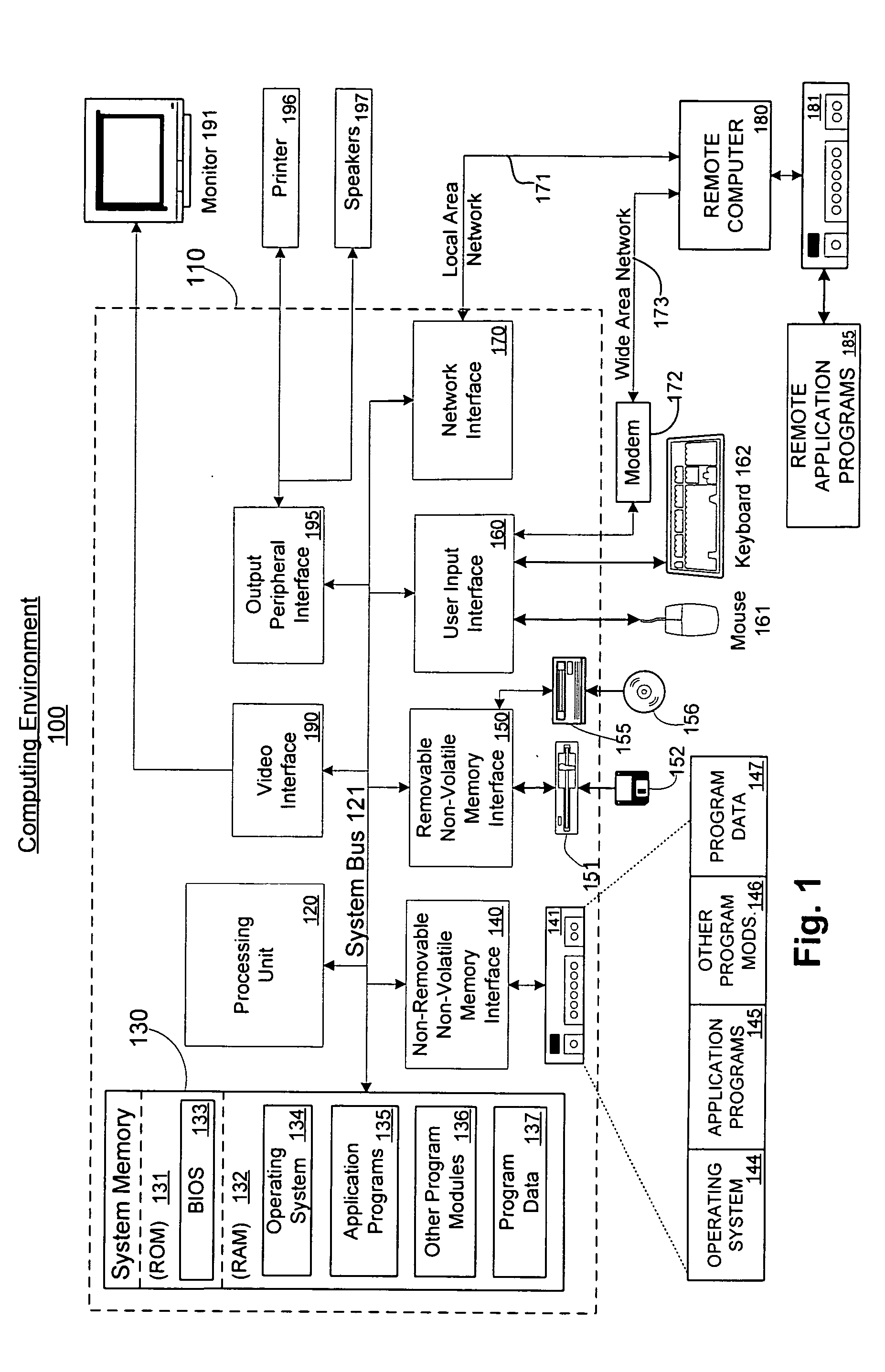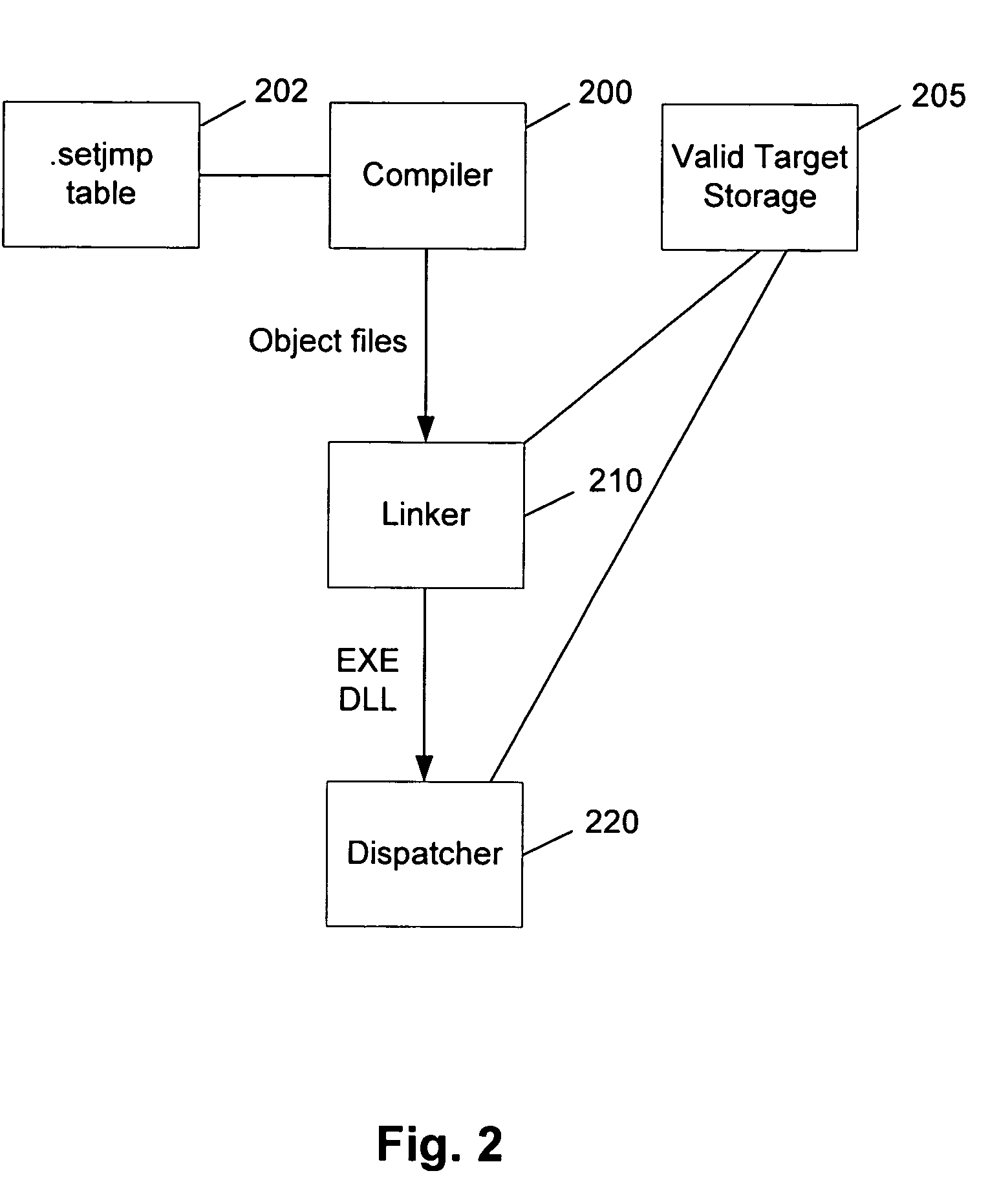Protection against runtime function attacks
a runtime function and protection technology, applied in the field of computer programming, can solve problems such as the inability to trust buffers
- Summary
- Abstract
- Description
- Claims
- Application Information
AI Technical Summary
Benefits of technology
Problems solved by technology
Method used
Image
Examples
Embodiment Construction
Overview
[0019] The present invention protects against a runtime function attack in which a return value or other target value is overwritten, thereby allowing an attacker to essentially hijack the system. The system (such as a compiler) knows which target values, return addresses, or other security mechanisms used in conjunction with the target values, are valid because it checks (and in fact may even create) a list of the return addresses and / or security mechanisms. The system can then verify that a runtime function call is real and not hijacked.
Exemplary Computing Environment
[0020]FIG. 1 illustrates an example of a suitable computing system environment 100 in which the invention may be implemented. The computing system environment 100 is only one example of a suitable computing environment and is not intended to suggest any limitation as to the scope of use or functionality of the invention. Neither should the computing environment 100 be interpreted as having any dependency ...
PUM
 Login to View More
Login to View More Abstract
Description
Claims
Application Information
 Login to View More
Login to View More - R&D
- Intellectual Property
- Life Sciences
- Materials
- Tech Scout
- Unparalleled Data Quality
- Higher Quality Content
- 60% Fewer Hallucinations
Browse by: Latest US Patents, China's latest patents, Technical Efficacy Thesaurus, Application Domain, Technology Topic, Popular Technical Reports.
© 2025 PatSnap. All rights reserved.Legal|Privacy policy|Modern Slavery Act Transparency Statement|Sitemap|About US| Contact US: help@patsnap.com



